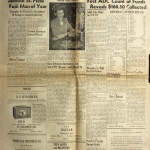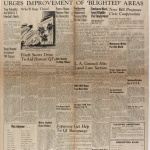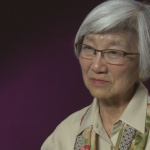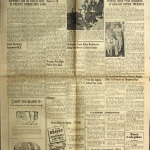Japanese associations
Pre-World War II immigrant associations that served as intermediaries between the Japanese government and the immigrant community and promoted educational and moral reform campaigns in the hopes of improving the reputation of Japanese immigrants in the United States.
Proxy for Japanese Government
At the beginning of the twentieth century, Japanese Associations functioned as critical intermediaries between the Japanese government and its consulates, and the diverse Japanese immigrant population dispersed across a broad area along the West Coast and Intermountain West. Japanese Associations functioned within a three-tiered hierarchy: the Japanese consulates occupied the top tier; central regional associations (in San Francisco, Seattle, Portland, and Los Angeles) served as intermediaries; and local associations. Found wherever there were significant Japanese immigrant populations, the local associations interacted directly with immigrants who needed access to the bureaucratic services offered by the associations and who were the objects of the associations' reform campaigns. This extensive network not only served a crucial bureaucratic function but also attempted to corral and manage what was often considered a largely uneducated, immoral, and problematic immigrant population.
While organizations that offered immigrants assistance through social and educational services had emerged by the late nineteenth century in areas with significant Japanese populations, the Japanese Associations were distinct in that they were formed in direct reaction to the Gentlemen's Agreement of 1907-1908. When the Japanese government agreed to voluntarily limit the issuance of passports to white collar and professional immigrants and the family members of people who had already immigrated, it became necessary to confirm and certify the status of Japanese already in the U.S. to authorize the subsequent emigration of the family members of those already in America. Japanese Associations were established in part to coordinate and process the registration of immigrants already in the country.
The Japanese Associations were also dedicated to countering anti-Japanese activists who began to gain political influence at the same time, attempting to regulate the behavior of Japanese immigrants and improve their general reputation in order to promote long-term settlement in America. At the same time, as an organization that consisted of the intellectual and economic elite of the immigrant community, Japanese Associations reflected a bourgeois suspicion of the habits, practices, and beliefs of the majority of the immigrant population who were mostly laborers.
Of the diverse activities and services that the Japanese Associations engaged in, the most influential and significant was the bureaucratic function they provided as proxies for the Japanese government, and more specifically, the Japanese consulates responsible for maintaining oversight and control of the diverse and disparate immigrant population. Since keeping track of all immigrants was a task considered too onerous by the consulates to handle directly, the actual act of registration and certification was conducted by local associations and overseen by the central associations. Granted the "right of endorsement," or delegated bureaucratic authority, by the consulates, these associations charged fees to process and register immigrants. A seemingly straightforward bureaucratic process, this function enabled the local associations to engage in coercive or restrictive social control since they could withhold certification from those immigrants in their jurisdictions whose behavior and activities the association members considered immoral, suspect, or potentially damaging to the reputation of the immigrant community as a whole. Additionally, these associations also handled applications for conscription deferment, something required of all Japanese adult males of draftable age.
Moral Reform and Educational Campaigns
While performing proxy duties for the Japanese government gave the Japanese Associations power and influence, they were also concerned with the problem of anti-Japanese agitation. Convinced that the prejudice and discrimination Japanese faced was largely the result of the immoral and "uncivilized" behavior of the lower class immigrants who constituted the majority of the population, members of the Japanese Associations engaged in moral reform and educational campaigns—that often included coercive tactics—in order to transform laborers into proper Japanese subjects who would more accurately reflect the degree of civilization lately achieved by their homeland.
For example, in certain communities, people who were known to frequent gambling houses were denied certification endorsements. At other times men and women who had left spouses and fled their own communities were denied registration by the local associations in other communities. Local associations kept in close contact with each other and used their networks to prevent immigrants considered to have transgressed moral expectations from establishing themselves elsewhere. When such measures were not considered enough, these associations occasionally even contacted the problematic immigrant's home village in Japan to use embarrassment and humiliation of the person and his or her extended family as a method of enforcing their adherence to community expectations.
The associations also employed less coercive means to attempt to reform the behavior of immigrants. They organized educational campaigns, even inviting prominent Japanese religious leaders to serve as the featured speakers, to exhort transient and shiftless immigrants to commit themselves to permanently settling in the U.S. as well as adopting American practices and shedding unsavory and uncouth behavior that they believed was the primary cause of anti-Japanese activity. The leaders of the associations advocated assimilation not because they believed that Japanese and American practices were incommensurable, but because they believed that lower class Japanese immigrants continued to engage in behaviors and activities no longer considered acceptable in Japan either. As such, becoming more "American" was also becoming more properly Japanese. Leaders, particularly of the central regional associations, promoted the idea that once this transformation occurred anti-Japanese agitators would accept Japanese as civilized equals deserving of their rightful place in American society.
The Japanese Associations continued to assert considerable influence until the passage of the 1924 National Origins Act . Once immigration from Japan was effectively banned, the function that the Japanese Associations served to establish which immigrants could bring over their family members became irrelevant. While they continued to engage in moral reform and education efforts, they ceased to enjoy the influence they held when they also served as part of the Japanese government's bureaucratic structure. After 1924, as the community leadership shifted their focus from the Issei to the future of the Nisei , Japanese Associations participated or initiated programs encouraging Nisei to continue to invest in their communities. These included the "Back-to-the-Farm movement," which was organized to convince Nisei to return to their parents' farms, and the "Return-to-America movement," which called on Nisei who had gone to Japan to return to the U.S. in part to address the problem of young Nisei women having trouble finding suitable partners to marry.
For More Information
Ichioka, Yuji. "Japanese Associations and the Japanese Government: A Special Relationship, 1909-1926." Pacific Historical Review 46, no. 3 (1977): 409-437.
Ichioka, Yuji. The Issei: The World of the First Generation Japanese Immigrants 1885-1924 . New York: The Free Press, 1988.
Azuma, Eiichiro. Between Two Empires: Race, History, and Transnationalism in Japanese America . New York: Oxford University Press, 2005.
Last updated March 19, 2013, 6:49 p.m..

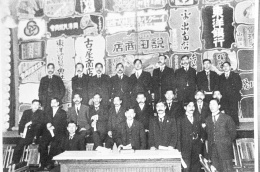 Media
Media


